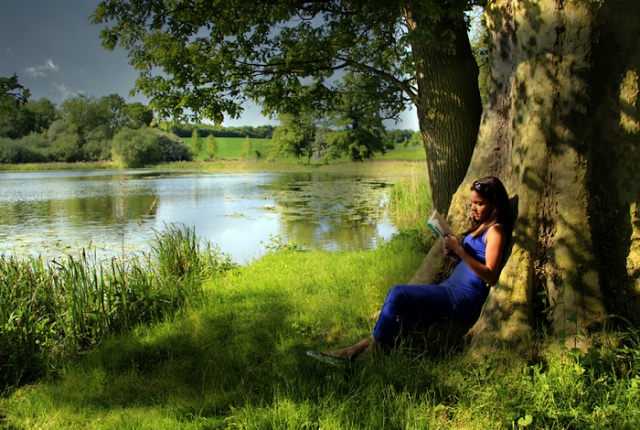On September 28th, I returned home after ten days in the woods.
Four of those days and nights I spent on a solo fast, with a tarp, a journal, water, and not much else. Ostensibly, my “quest for vision” amounted to very little, but that nothingness demands reflection…
Oh, yes—nothingness.
What a terrifying and yet endlessly alluring prospect. The black hole in which the void and infinite possibility meet and become one. The fate of galaxies. Deep down, probably one of humankind’s greatest fears.
Personally, I have never liked having nothing to do. Given free time, I will always feel the need to use it “productively” by reading, cooking or otherwise staying busy. In school, I was always the person who signed up for ten different clubs, had a lecture to run to most afternoons, and squeezed work into the gaps between activities. I seem to be most content, and most at ease, when moving. Yoga has always been an effective meditation for me for exactly that reason.
Lately, I will leave one job only to come home and work on another, or I will take a break from research by writing a blog post. “Doing nothing” rarely features on my calendar.
To be honest, it makes me a little bit nervous.
I had my first exposure to this art while traveling through Southeast Asia. Sitting for 12 hours on a bus out of Kathmandu and waiting for the congested mountain passes to clear taught me a lot about patience. Spending half a day at a bus stop because there was no set schedule did the same. Watching my fellow passengers, I made a study of sitting stoically through endless traffic. As the months wore on, I, too, discovered the ability to wait indefinitely, unaffected by frustration or annoyance.
However, I had books. I had yarn and a crochet hook. I had people to talk to. I had plans to ponder for my arrival.
When you head into the woods alone, with absolutely nothing to do for four days, you quickly realize two things.
First, as I wrote in my journal on the second day, “Sh*t, days are really long!” Second, it is impossible to feel bored for more than a couple of hours. Boredom simply is not a sustainable emotion.
After a few hours of what could be called boredom, I shifted into another mode of being. That is, I started to learn the art of doing nothing.
Certainly, I could have done many things with my time. I could have written poetry, gone for long walks, created rituals of severance and incorporation, or done yoga or meditation. And I did a little bit of all of these, but mostly, I did nothing.
Why? Because for the first time I felt the seductive tug of the voluptuous absence that doing nothing creates.
Absence of thought and action.
Absence of the desire to fill the absence.
This was no deliberate attempt to meditate and clear my mind and body of restlessness; it was rather more akin to falling on my face and deciding to stay there.
I fell into doing nothing right from day one, and rather than work up the motivation to do something else, I decided to finally give this non-activity a try.
In the mornings, I woke well after sunrise, carried my blanket and water to a rocky peninsula nearby, and promptly lay down again. I stayed until midday, fancying myself a lizard in the sun, with nothing better to do. I embraced the lethargy.
The sound of water lapping at the rocks and wind whispering through fallen leaves lulled me into stillness.
The trick, I think, was truly having nothing better to do. I don’t know that I could spend such a spectacular amount of time doing nothing in my “normal” life. For many of us, if we wish to learn the art of doing nothing, we will have to remove all other options.
I am grateful to have been able to give myself these days away, but we can also simulate this experience by creating an empty space in our homes where we can spend a few “empty” minutes each day. We can get lost in the woods (taking precautions, of course), sit down on a rock, and dissolve. We can make a practice of allowing empty space and time to wash over us while we lounge in the sun like lizards.
Because finally, “nothing” is not really something we can do. An education in the art of doing nothing begins with the understanding that this is in fact an art of non-doing, of non-thought, and of non-action. For those like me, perpetually occupied, active and thinking, there could not be a more challenging lesson to learn.
In my opinion, doing nothing differs from meditation on one point: we can sit down and try to meditate, but we do nothing only when we have given up even that.
When we have accepted the circumstances of a moment, exactly as they are, and are utterly resigned to passing a thousand—or a million— more moments in the same way, then we are doing nothing.
If you’re thinking this doesn’t sound like much fun, you are absolutely right.
I found this practice valuable largely because it was challenging, not enjoyable, and maybe not even beneficial. But I suspect it did me some good, and I would encourage you to give it a non-try, for an understanding of non-doing, non-action, and non-thinking—that is, of nothingness— is part of a complete experience of living.
Love elephant and want to go steady?
Sign up for our (curated) daily and weekly newsletters!
Editor: Renée Picard
Image: Stephanie Veronique at Pixoto












Read 1 comment and reply